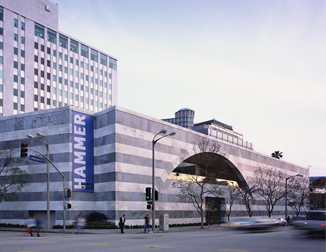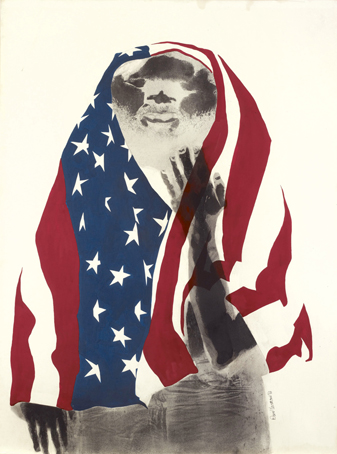
America the Beautiful (1968)
David Hammons
This striking work is from a series of “body prints” that David Hammons made early in his career, soon after his arrival in Los Angeles in 1963. To create these prints, Hammons made impressions of his own face, arms, and torso by covering his body with oil or margarine, pressing it against a sheet of paper, and then sprinkling pigment on the surface. For America the Beautiful, the artist used lithography to add the American flag that envelops the central figure. Hammons created this work in 1968, toward the end of the civil rights movement and the beginning of the black power movement. The assertive combination of a patriotic symbol with the body of a black man (the artist) underscores the heightened racial tensions in the United States during this period.
Lithograph and body print 39 x 29 1/2 in
Collection of the Oakland Museum of California, The Oakland Museum Founders Fund
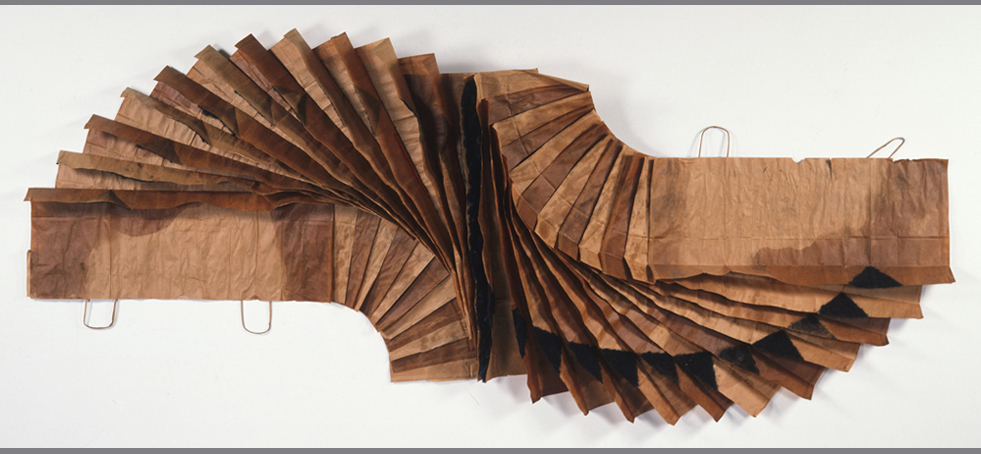
Bag Lady in Flight (ca. 1970)
David Hammons
Shopping bags, grease, and hair 42 1/2 x 116 1/2 x 3 1/2 in
Collection Eileen Norton, Santa Monica, California
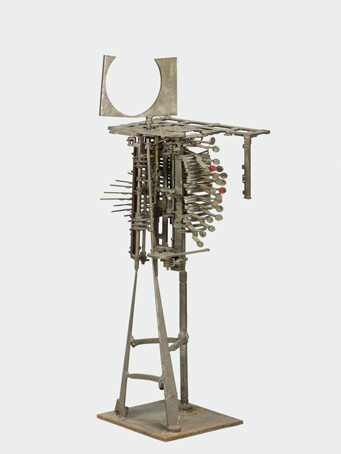
Ghetto Merchant (1966)
John Thomas Riddle
Ghetto Merchant was created from physical remnants of the rebellions and most probably shown in the 66 Signs of Neon exhibition. Anthropomorphic in sensibility, it incorporates a burned-up cash register as its core element, its wiry keys a skeletal torso. This is topped by an “empty” head formed from the negative space in a metal fragment and held up by spindly steel legs, an apt metaphor for a figure that preyed on the Watts community.
Mixed media 41 x 18 1/4 in
Collection of Claude and Ann Booker, Los Angeles
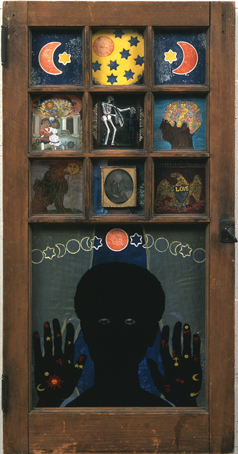
Black Girl's Window (1969)
Betye Saar
Betye Saar was first to integrate actual historical objects, so-called “black collectibles,” into her pieces. By incorporating them Saar sought to consume their power, to enact physical and artistic cannibalization, and thus drain their negative magic.
Assemblage 35 3/4 x 18 x 1 1/2 in
Collection of the artist; Courtesy of Michael Rosenfeld Gallery, LLC, New York
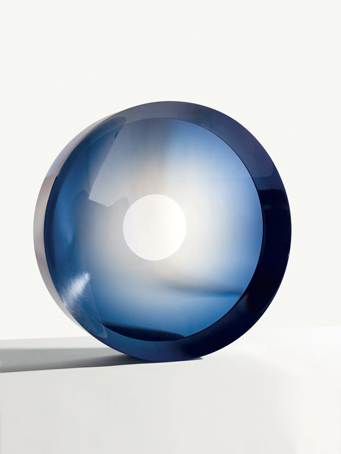
Untitled (1973)
Fred Eversley
Cast polyester resin 20 x 20 x 7 in
Collection of the artist
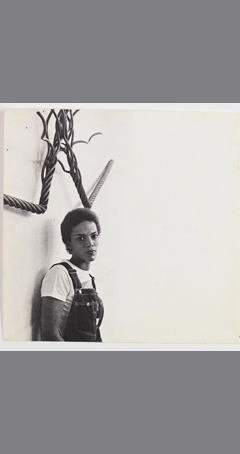
Maren Hassinger (Date unknown)
Maren Hassinger
In
graduate school at UCLA in the early 1970s, Maren Hassinger discovered
what would become a pivotal medium for her: wire rope. In her hands,
this material came to embody the changing landscape of American
sculpture from minimal to postminimal: it was a synthetic substance
that, with subtle intervention, could echo organic form. These solid and
industrial, yet process-driven sculptures become the “initiators†of
activity; lending themselves to the temporality of performance. For “Now
Dig This!,†the Hammer Museum commissioned re-creations of historical
work by artists Senga Nengudi and Maren Hassinger. As part of
Hassinger's residency, she crafted a piece inspired by an installation
of her sculpture at Los Angeles's Arco Center for Visual Art in 1976.
Photograph by Jerry McMillan
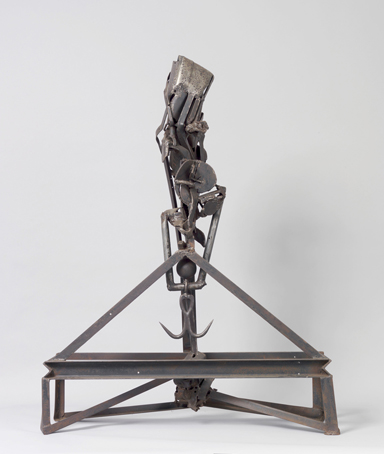
The Lifted X (1965)
Melvin Edwards
Steel 65 x 45 x 22 in
Courtesy Alexander Gray Associates, New York, NY; Courtesy of the artist
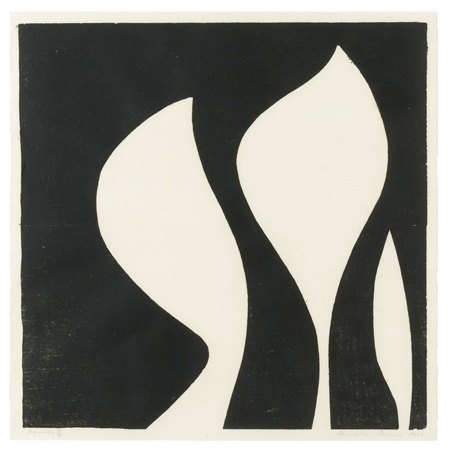
Family (1967)
Samella Lewis
Linocut on rice paper 15 3/8 x 15 5/8 in
Collection of the Oakland Museum of California, The Oakland Museum Income Purchase Fund
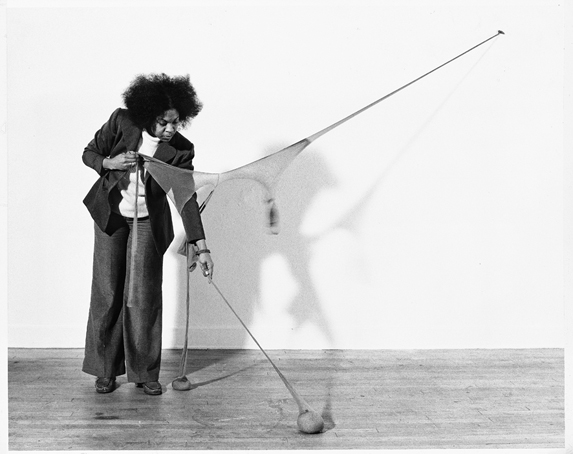
Senga Nengudi, Performance with R.S.V.P.X (1977)
Senga Nengudi
In
the 1970s, Nengudi created what would become her signature works, free
form sculptures constructed primarily from pantyhose and sand. They were
tied and knotted, shaped, twisted, and suspended from walls and
ceilings. Their very material and anthropomorphic form certainly
suggested the body in motion. However, their pliant nature was not just
part of an anti-sculptural, environmental orientation, or feminist
bearing. They were supposed to be interacted with: caressed, fondled,
and stroked by the artist as well as viewers. For Now Dig This!, the
Hammer Museum commissioned re-creations of such historical work by Senga
Nengudi.
Nylon, mesh, and rose petals
Photograph by Ken Peterson
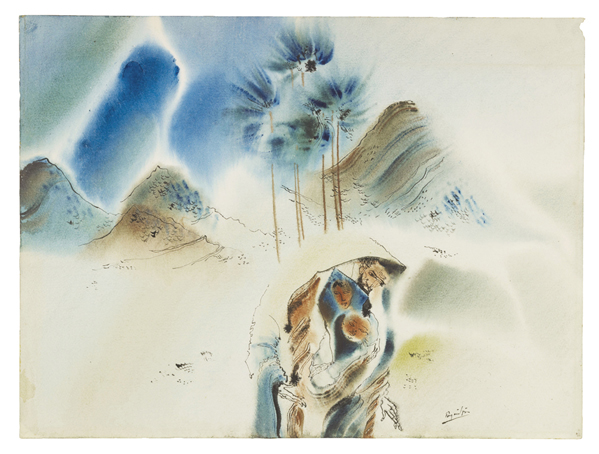
Holy Family (ca. 1965)
William Pajaud
Pajaud's biblically themed watercolor Holy Family is indicative of his artistic thinking during this period, with its delicate ink drawing combined with washes of floating color.
Watercolor, pen, and ink on paper 15 x 20 in
Welton Jones, WAJ Collectibles
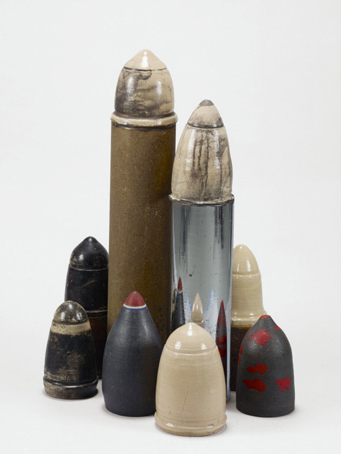
Viet Nam War Games (1969)
Dale Brockman Davis
Clay and metal Variable dimensions: 48 x 48 in
Collection of the artist © Dale Brockman Davis
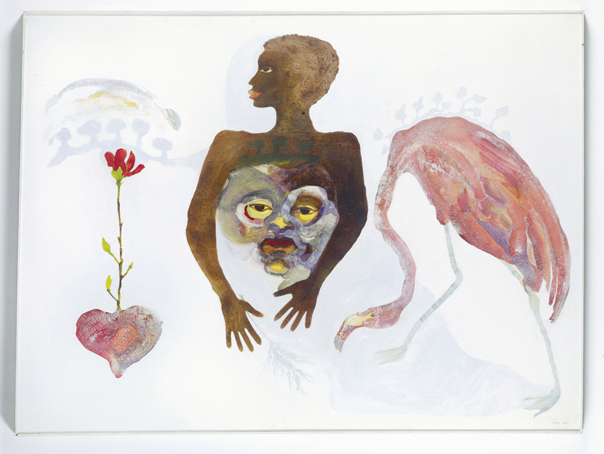
Apparitional Visitations (1973)
Suzanne Fitzallen Jackson
Acrylic wash on canvas 54 x 72 in
Collection of Vaughn C. Payne, Jr., M.D. Photograph by Ed Glendinning
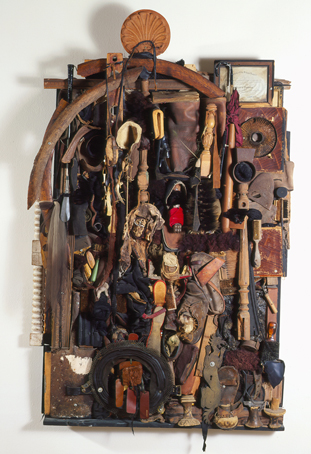
Untitled (Assemblage) (1967)
Noah Purifoy
Mixed media 66 x 39 x 8 in
Corcoran Gallery of Art, Washington, DC. Museum Purchase, the William A. Clark Fund and Gift of Dr. Samella Lewis © Courtesy the Noah Purifoy Foundation
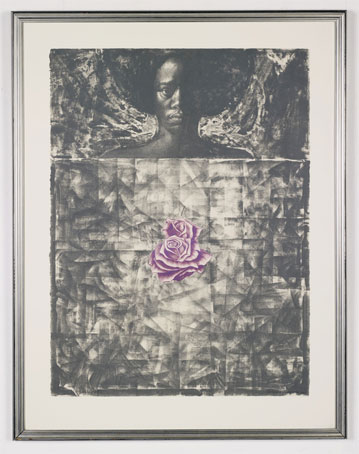
Love Letter #1 (1971)
Charles White
Lithograph with documents 22 3/16 x 30 in
Private collection. Photograph by Ed Glendinning © C. Ian White
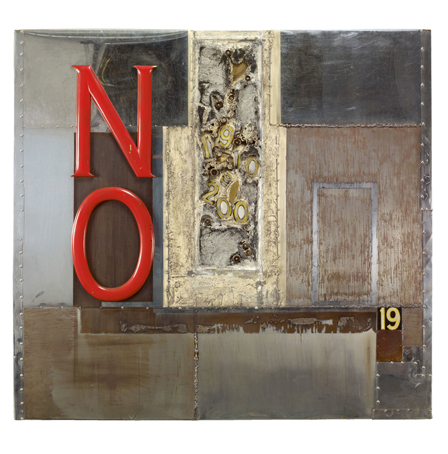
No Time for Jivin', from the Containment Series (1969)
John Outterbridge
Mixed media 56 x 60 in
Mills College Art Museum Collection. Purchased with funds from the Susan L. Mills Fund. Photo: Ed Glendinning © Mills College Arts Museum


